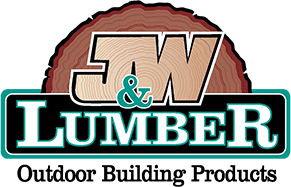
We get great questions from our customers and our lumber experts are always happy to share our knowledge. A lot of these questions come from customers planning DIY projects and some seem to pop-up more frequently than others. We asked our lumber sales experts to give us the most common questions they hear.
What’s the best way to age wood – without actually waiting for the passage of time?
Yes, you can “age” wood – or at least give it the appearance of age – and there’s a simple trick to do it. Get a hold of some fine-grade steel wool – preferably 0000 – and break it into several small chunks, then put it into a glass jar. Fill the jar with white vinegar and let it set at least 24 hours. Use this mixture to “paint” your lumber. But before you paint with the vinegar mix, brew some black tea and pour into a bowl or cup and using a cheap brush and evenly coat the wood with the tea to prep it.
Once the tea has dried, paint the steel wool/vinegar mixture onto the wood. After it dries completely, lightly blend the color inconsistencies and drip marks with 220 grit sandpaper. When done, wipe off with a dry cloth, or if it’s interior piece, use furniture wax.
PRO TIP: To create a truly reclaimed look, our lumber sales team suggests putting some screws into a plastic bag and hitting the wood with it prior to applying the stains. Also, try hitting it with some chains and/or a hammer for an “authentic” barn wood look.
Also, be sure to check out 5 Simple Steps to Estimating Your Next Lumber Project.
Why don’t my hangers fit on my rough joists?
Good question. We get it a lot. Along with “why are my posts too big for my post bases?” The answer is because rough lumber is slightly thicker and wider than smooth lumber, and because stock hangers are fitted for smooth framing materials. If you buy rough cut wood and don’t spec either custom hangers or milling, you’re in for a lot of sanding.
PRO TIP: To avoid extensive sanding to get your wood to match your hardware, either have your lumber supply company saw your materials to s4s size or purchase modified hangers and bases.
Do I need to seal my deck or fencing?
Yes. Especially if you want your wood to last and retain its color. Staining and sealing your deck or fence will prevent moisture from absorbing into the wood. The leading cause of wood deterioration, moisture always finds its way into the wood and creates the perfect growing conditions for mold, mildew and other destructive bacteria. Sealing and staining will also protect your deck from harmful UV rays that cause discoloration in wood.
PRO TIP: Realistically, you should stain and seal your deck or fence every 18-24 months to minimize moister absorption and color discoloration if you want to keep it “healthy.”
Do you need a permit to build that deck? Find out here.
What is “regular” wood? You know, the cheap stuff.
The common low-cost wood you see from lumber supply companies is the versatile and affordable Doug Fir. It’s the cheapest and most basic wood you can buy. It’s prone to twisting if not installed properly, termites love it and, well, it’s kind of ugly. But it’s also one of the most widely used lumbers for construction projects, thanks to its cost, strength and do-it-all capabilities.
PRO TIP: When using Doug Fir for projects that require sturdy framing, examine the wood for points of weakness. Our lumber yard experts recommend choosing beams with less “eyes” for more stability.
What do the terms “nominal” and “actual” lumber size mean?
Nominal sizes for lumber refers to the “name” of the size. For example, 2X4 or 4X8 are “nominal” sizes. The “actual” size of a 2X4 is 1 ½” X 3 ½”. Everyone uses this terminology – even official websites and ADS. It’s a widely accepted name for that dimension of wood. But it’s not the exact dimension. And even the exact size varies. Smooth wood and rough wood 2X4s will have slightly different “actual” sizes – with rough wood being about a quarter inch thicker than soft. Despite having a specific size as its name, these monikers were created by lumber mills to avoid confusion and boost efficiency.
PRO TIP: Always measure.

Would like to make a small bench for my mother’s patio potted plants. On a budget and this is an outside project so have been considering pressure treated pine from local Lowe’s. More a fan of the natural look so was also considering a few coats of linseed oil. Considering 2×6’s or 5/4×6’s (4ft length) for the top, 4×4’s for legs and 2×4’s for a little extra support across the legs on both sides. I know very little about wood (probably obvious) so any advice would be welcomed.
Hi Allan- thanks for your reply! What are of the US do you live in? If you are close to San Diego, come in and we can show you the different varieties that we carry that would be a good fit plus help you with measurements and dimensions.
For wood itself- I would stay away from pressure treated if you think it will ever come in contact with skin, it contains chemicals that are great for protecting from moisture (like under a deck) but aren’t great if you get a splinter.
How much weight do you think this bench would be holding? What would you like the finished dimensions of the bench be?
One of my favorite DIY websites has some great guides- here’s one on building a simple bench (ignore the table portion)
https://www.ana-white.com/woodworking-projects/beginner-farm-table-benches-2-tools-20-lumber
For that one she uses oil to finish, but its inside and doesnt need waterproof or long term protection- if you really like the natural look I would suggest going with Penofin (https://www.penofin.com/wood-stains/penofin-stain-sealer) it stains and seals and has a transparent finish so you can still see that beautiful wood!!!
Would love to see pics of your finished project!! feel free to email me at michelleb@jwlumber.com
HAPPY BUILDING!
It’s snowing/sleeting. We live near Syracuse, NY. We just installed a handicapped accessible ramp built out of pressure-treated lumber which needs to be up a year to “season” b/4 painting / staining. It’s a bit slippery when wet which defeats its purpose of being a “safe egress” for aging parents getting to the car.
Taking a poll. Do we:
a) buy a few sacks of sand and spread over the length of it, the boards are tight together (rather than spaced)
b) spread rock salt (but when it melts then freezes we’ll have an ice slick)
c) lay down some old carpets (possible trip hazard)
or
d) what would you suggest?
Should we treat western red cedar siding or not?
Hello Holly-
The Western Red Cedar Association recommends you seal your cedar boards on all six sides for longevity and its best performance. J&W Lumber stocks a variety of stains that would be a great option depending on what look you are trying to achieve.
Here is a short video from the association:
https://youtu.be/C8sJoUVrwDw